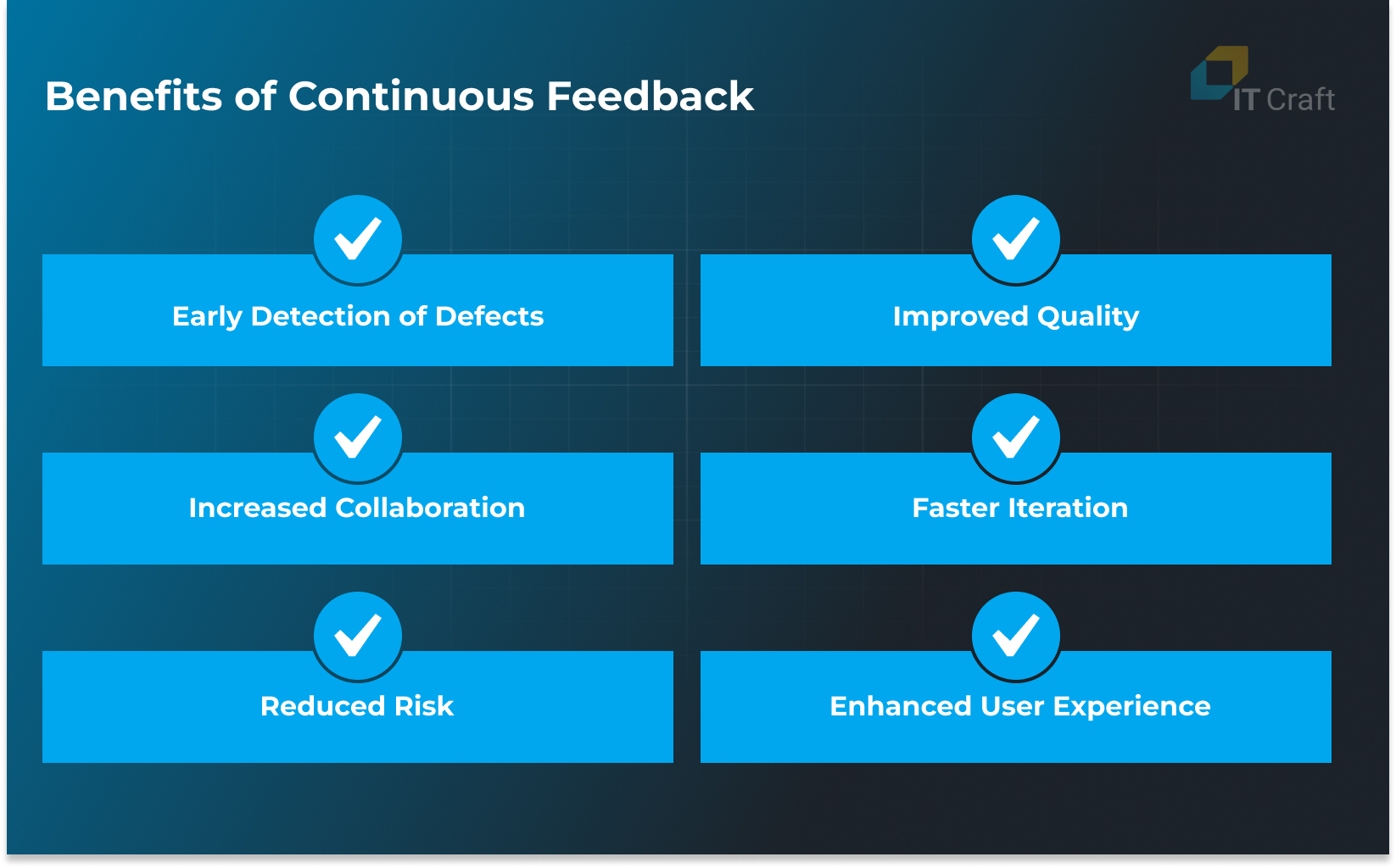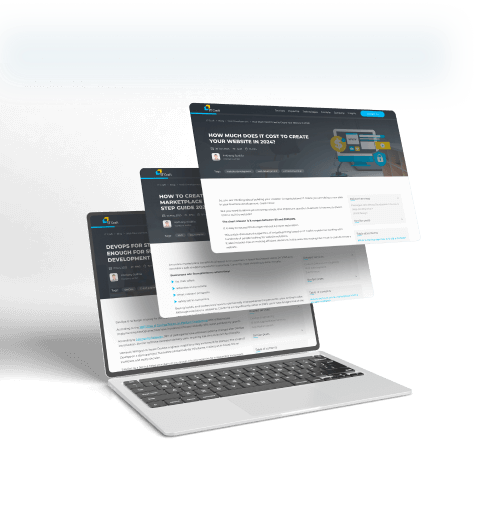Continuous feedback refers to the conversion of concrete feedback in the form of testing results and review comments in CI, build/deploy status information, metrics related to runtime performance (latency and error rate), traces and logs, alerts and user feedback into swift action in the Software Development Lifecycle.
What Is Continuous Feedback?
Continuous feedback refers to the concept of gathering and acting on feedback from tests, CI/CD, production monitoring, and end-users all throughout the Software Development Life Cycle.
Automated Testing
Frequent automation testing (unit tests, integration tests, E2E tests, and performance tests) is autoscaled and run in the CI pipeline for each change (commit and/or pull requests): The system builds your code, runs your tests, makes a build fail if there are regressions, and delivers feedback to your team.
Monitoring Production Systems
The telemetry information (logs, metrics, and traces) and application performance monitoring (APM) information gathered from a running app point out hotspots related to behavior, reliability, and user experience to help developers quickly identify and prioritize improvements.
User Feedback
The information is gathered through user surveys, user experience sessions, beta testing, and in-product widgets. The information is important to teams as it aids in understanding user needs and verifying changes designed for features and functionality.
Stakeholder Feedback
The input provided through structured channels like code review and project planning sessions involving other stakeholders like developers and operations teams is essential in keeping project goals aligned while maintaining a high level of quality.
Benefits of Continuous Feedback:

Early Detection of Defects
Shift-led practices like unit and integration testing, code analysis, and quick code reviews can identify flaws while they are still small in size. Identifying flaws earlier in the process prevents flaws from progressing down the pipeline.
Improved Quality
The regular feedback stream generated through testing, code evaluation, and execution metrics (such as performance and error rates, and resource consumption) ensures that development activity is in line with requirements and actual needs. Iterative refinement will eventually provide a stable and more manageable product without incurring ‘technical debt’.
Increased Collaboration
Embedding feedback in daily rituals (reviews, pair sessions, sprint retrospectives, and blameless incident debriefs) creates shared ownership across development, quality assurance, and operations teams. Shared dashboards and common definitions of “done” improve communication and speed up handoffs.
Faster Iteration
By combining quick learn-build-measure cycles with CI/CD and feature flags, teams can achieve frequent and risk-free deployments. This will enable teams to make quicker decisions and take corrective action based on new information without waiting for a long time to get feedback.
Reduced Risk
Continuous validation happens when testing and feedback occur continually. Continuous validation can be used to break a big bang release down into a number of smaller steps.
Examples of guardrails that can help ensure that big bang release deployments are not created include automated testing for quality (unit level testing, integration testing, security testing), SLO-driven alerts, canary releases (deploying to a small group of users initially), and smooth rollbacks, following best practices in DevOps agile operations and continuous delivery.
Enhanced User Experience
Product feedback, surveying users, user testing, and analysis provide concrete development priorities based on user behavior. The development team works to address user pain points first and then delivers features that fulfill users’ needs and prevent drop-off.
How to Implement Continuous Feedback:
Establish a Continuous Integration and Continuous Delivery (CI/CD)Pipeline
Keep commits small and frequent, automate the build–test–package–deploy pipeline, and monitor build performance, test results, and deployment logs to quickly detect issues.
Choose the Right Tools
Integrate Source Control Management (SCM), Continuous Integration/Continuous Delivery (CI/CD), test runners, Static Application Security Testing (SAST) / Dynamic Application Security Testing (DAST), dependency scanning, and unified observability with alerts.
Define Clear Feedback Channels
Decide on owners and homes for each signal (e.g., CI dashboards, Service Level Objective (SLO) boards, release notes, or support queues) to ensure accountability and visibility.
Analyze Feedback and Take Action
Triage noise, cluster themes, create issues with owners, and validate fixes via flags and staged rollouts.
Promote a Culture of Feedback
Blameless reviews, visibility through dashboards, pairing, and refactoring/observability time are all factors that ensure that feedback cycles are closed. Feedback cycles are a process of detecting a problem, sharing information about that problem, and making changes to improve. When these practices come together, they create a seamless and effective DevOps loop that enables teams to continuously improve their systems and workflows.
Conclusion
Continuous feedback isn’t a ceremony – it’s the mechanism that keeps modern delivery on track by turning insights into actions at every stage. To put it into practice:
- Start small and iterate frequently
- Wire signals to actions so issues lead to fixes
- Review key metrics for each sprint
- Close feedback loops relentlessly
Learn about how our team of DevOps experts can support your DevOps journey.


